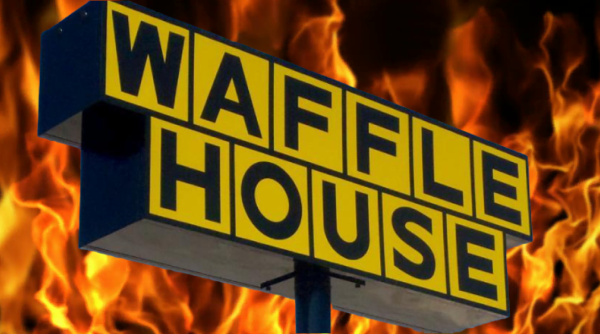

America’s battle with the novel coronavirus (COVID-19) may be at a turning point, at least, according to Waffle House.
According to the latest numbers from the Centers for Disease Control and Prevention, COVID-19 has killed 737 Americans and sickened another 54,453 others. Within the ranks of the U.S. military in particular, there are currently 227 cases among active-duty service members as of Wednesday, up from 133 on Monday. With a third of Americans stuck at home, the pandemic shows no signs of waning anytime soon.
Now, the worst has come: the beloved Georgia-based restaurant chain Waffle House announced on Wednesday that it would close 365 locations amid the spread of the disease.
“Our mission is to provide an essential service in our communities during difficult times for all, including first responders and health care providers,” the company had previously said in a March 15 statement. “We want to acknowledge the great efforts of our associates, who work hard every shift to create a safe, warm and welcoming dining experience 24 hours daily. We are working hard to support them as we do our best to manage through this crisis.””
While the chain plans on keeping more than 1,600 of its restaurants open, the initial spate of closures should send a shiver down your spine. As FiveThirtyEight put it back in 2016: If Waffle House is closed, it’s time to panic.
The Waffle House Index
Believe it or not, the propensity of Waffle House to keep its locations open in the aftermath of natural disasters spawned its very own informal metric to determine both the impact of a disaster and the necessary scale of assistance required.
According to FiveThirtyEight, the index originated in 2004, when then-Florida director of emergency management W. Craig Fugate was coordinating the state’s response to Hurricane Charley. In search of a hot meal, Fugate and some fellow officials found only a limited menu, their first hint that the restaurant could function as “a proxy for how much a disaster disrupts a community.”
“If you get there and the Waffle House is closed, that’s really bad,” Fugate, then the administrator of FEMA, told the Wall Street Journal in 2011. “That’s where you go to work.”
Here’s how the index works, according to the Wall Street Journal:
Green means the restaurant is serving a full menu, a signal that damage in an area is limited and the lights are on. Yellow means a limited menu, indicating power from a generator, at best, and low food supplies. Red means the restaurant is closed, a sign of severe damage in the area or unsafe conditions.
To be clear, the Waffle House Index isn’t an official index: FEMA doesn’t formally measure it, and nobody but Waffle House systematically tracks whether the restaurants are open or closed or offering a limited menu.
But according to FiveThirtyEight, the chain does provide data to FEMA that the agency uses along with other more substantial measures like power outages that are generally used to assess a disaster’s impact to figure out where to send emergency relief crews.
The index “also stands for something less obvious,” according to FiveThirtyEight: “It is an indicator of how complex and long supply chains are — for food, for fuel, for power — and of what it takes to plan around infrastructure that can be fragile in unexpected ways.”